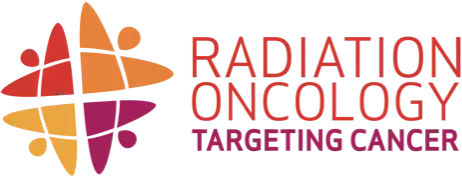Stereotactic
Radiosurgery (SRS)
Stereotactic Radiation Therapy and Radiosurgery is a high dose of targeted radiation to a small part of the brain or other parts of the head.
People usually get 1-5 treatments.
When radiation oncology teams do 1 treatment it is stereotactic radiosurgery (SRS).
If they do more than 1 treatment it is stereotactic radiation therapy (SRT).
Although SRS has the word ‘surgery’ in its name it does not use any cuts. It is a non-invasive treatment for people with cancer.
Radiation oncology teams use SRS for people with:
- secondary cancers that have spread to the brain.
- secondary cancers in the brain before or after they have been removed.
- slow growing non-cancerous tumours.
- cancers or tumours that come back in an area that has had radiation therapy before.
- some non-tumour conditions such as Arteriovenous Malformation (AVM).
Treatment Team
A large team of experts plan and deliver SRS. Before treatment, doctors meet to talk about whether SRS is suitable for someone.
This meeting often includes radiation oncologists, surgeons, medical oncologists, neurologists, and radiologists.
A highly trained radiation oncology team takes care of people having radiation therapy. This includes radiation oncologists, radiation therapists, medical physicists and radiation oncology nurses.
Treatments for Stereotactic Radiosurgery
During SRS treatments, the radiation oncologist delivers one high dose of radiation to the tumour with the help of imaging and careful planning.
People must stay very still when they get SRS and the radiation oncology team provide special equipment to ensure this happens. In most cases people wear a fitted mask or a headframe during treatments to ensure they stay still.
SRS is only suitable for some people. Doctors think about many things before doing SRS, this includes the overall health of a person and their symptoms.
Radiation oncology teams use different machines to do SRS. All of them offer safe radiation therapy with high accuracy. This reduces the risk of damage to healthy body parts.
The radiation oncologist may also do imaging to make sure a person is in the right place and the treatment is targeted on the cancer.
Depending on the type of SRS and the number of areas, each treatment takes 30 minutes to 1 hour.
SRS is not painful, and people usually manage very well.
General Information About Side Effects of Radiation Therapy
The potential side effects vary depending on the treatment area.
Some people feel tired or unwell and have a headache right after treatment. This is usually mild and does not last long.
Other side-effects may occur months or years after treatment but are rare. Radiation oncologists carefully plan SRS treatment to reduce these side-effects.
The results of treatment vary. Your radiation oncologist will talk to you about this and answer your questions before treatment.
- Benefits and Effectiveness
- Treatment Process
- Radiation Oncology Team
- Potential Side Effects
- Indigenous and Maori Care
- Frequently Asked Questions
- Other Useful Resources
- External Beam Radiation Therapy (EBRT)
- Brachytherapy
- Stereotactic Radiosurgery (SRS)
- Stereotactic Ablative Radiotherapy (SABR)
- Superficial Radiation Therapy (SXRT)
- Particle Therapy
- Benefits and Effectiveness
- Treatment Process
- Radiation Oncology Team
- Potential Side Effects
- Indigenous and Maori Care
- Frequently Asked Questions
- Other Useful Resources
- External Beam Radiation Therapy (EBRT)
- Brachytherapy
- Stereotactic Radiosurgery (SRS)
- Stereotactic Ablative Radiotherapy (SABR)
- Superficial Radiation Therapy (SXRT)
- Particle Therapy
Radiation Oncologist
The best person to talk to is a radiation oncologist. You can ask your doctor for a referral to find out if radiation treatment is right for you.
GPs and Health Professionals
Information for any health professional involved in a patient's cancer care with a particular focus on primary care providers.
Talking to Your Doctor
Your GP or other doctors in the cancer team can organise a referral to a radiation oncologist.
Treatment Centres
Search and find your closest Radiation Oncology Treatment Centre.




